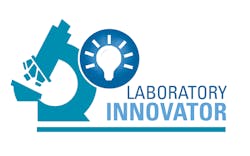I last led a company that developed and manufactured sophisticated process control solutions and saw how analytical insights could improve efficiency and processes to increase uptime. Turning data into knowledge ultimately leads to better outcomes, both for the firm and its end users. That is LabVantage’s purpose.
We are applying the thinking from our collective experience to merge technology, informatics, and analytics to achieve the goals of greater productivity and efficiency, which leads to better outcomes, no matter the industry. Transforming data into workable knowledge ultimately leads to transformative results.
In April, a new “purpose-built biobanking lab information management systems (LIMS) accelerator for managing COVID-19 testing” was announced. Can you elaborate on its clinical benefits?
The benefits are twofold. Widespread laboratory testing is a critical component in the battle to control the coronavirus pandemic sweeping the globe. First, we mobilized our decades of expertise to rapidly deliver a new purpose-built biobanking LIMS to support COVID-19 testing and research. It incorporates our knowledge of biobanking along with numerous features designed to make it easy for laboratories to acquire, implement, and use our LIMS for their COVID-19 testing. The COVID-19 LIMS accelerator is also scalable, an important attribute as testing volumes escalate.
Second, our COVID-19 LIMS can be used to track the biospecimens and results that are helping people return to work safely, which is another critical, emerging task. We built a biobanking-specific LIMS, which is well-suited for the vast tracking required of all these samples. We are working with some major employers to ramp up testing capabilities, so they can bring their workforces safely back into manufacturing plants, warehouses, office buildings, and the like.
What has been the single, most important goal – LIMS or otherwise – for LabVantage Solutions related to the COVID-19 pandemic?
First and foremost, the health and safety of our employees worldwide, and those of our customers. True to our purpose, we are here to improve outcomes. Our solutions are contributing to collecting and analyzing data from COVID patients, which then yield insights that identify opportunities for treatment and spot important trends.
Simply stated, our focus on transforming data into workable knowledge helps our clients and their end users flourish.
How can current lab informatics options potentially impact future LIMS and Software-as-a-Service (SaaS) implementations and help streamline the workflows of clinical lab professionals?
When it comes to lab professionals, we are most interested in how they will use the system and what it needs to do for them. SaaS is important for the team choosing how to implement the LIMS in that it offers rapid deployment, ease of maintenance and upgrades, and reduces upfront capital expenses.
But to streamline the workflows, our approach has been to leverage four decades of knowledge, acquired through significant numbers of installations, and preconfigure the LIMS in an industry-specific way to meet the needs of users.
You can see this in our COVID-19 LIMS accelerator, which handles biobanking, testing, and reporting requirements of COVID-19 biospecimens. Similarly, we have a laboratory information system (LIS) that is built for medical testing laboratories in hospitals and other healthcare settings. It is designed with the industry-specific functionality that makes the workflows and processes in these lab settings easier, faster, better, more effective, and more efficient.
In addition, we are developing functionality specific to streamlining lab work. For example, we introduced a module for assigning work and resource planning that is essential for lab productivity; it has been a tremendous aid in assigning not only workers but maximizing instrument use, and we’re seeing that is quite important as all this COVID-19 testing increases.
Where do you see the company’s direction going over the next five to 10 years with an eye towards improving the accessibility of data and technology?
Our purpose, of turning scientific data into knowledge that drives better outcomes, is lasting. So, our direction will be to serve the lab of the future – however it looks. And we will do that by continuing to make sure our software supports labs in terms of driving efficiencies, productivity, and outcomes.
Analytics will play a big part of that, and we will continue to develop products that fit our purpose. This will continue to drive us, and it should be consistent with where the lab of the future is going because we know it’s not just about collecting and processing data, but what you do with data that is transformative.


